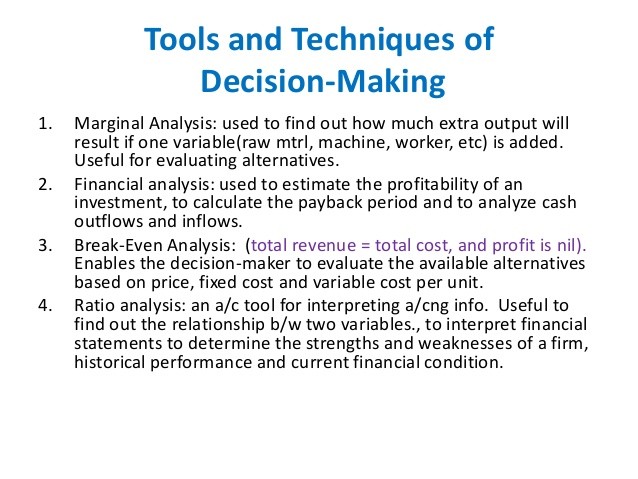Quantitative Decision Making Tools Decision Trees Payback Analysis Simulations Video Lesson
Post on: 16 Март, 2015 No Comment

Instructor: Rob Wengrzyn
Successful managers use decision-making tools to analyze a problem and try to determine the best solution for that problem. Here, we will discuss three main decision-making tools and help you to understand their function and implementation.
Decision Making Tools
Good managers do not simply just make decisions. Instead, they use tools to determine the best course of action, making it possible for the manager to make an informed decision. That does not mean that good managers always make the right decisions, but they certainly are making decisions that are more informed than they would be based purely on guesswork.
The Decision Tree
Example of a decision tree
The first tool we will look at is the decision tree. This tool has us write down an issue or problem, and then, as we think through the problem, we draw solutions or steps that branch out from the original issue. You start your decision tree by taking a piece of paper and drawing a small square to represent the decision you need to make. It could look something like this:
‘Should we decide to continue to produce dress shoes only, or should we look at making sneakers as well?’
This first block represents the issue that requires you to make a decision. From there, just like the name ‘decision tree’ implies, branches start to sprout out with your thoughts for different solutions or directions for this issue.
You can make any number of branches, and there is no set pattern to the decision tree — it is defined more by its functionality than its form. Using a decision tree, you can capture your thoughts, review them and, if needed, add more branches, hopefully continuing on until you find your answer. Each decision you make leads you to another decision (or would/could choice) and that choice leads you to another.
Payback Analysis

I’m happy to say that payback analysis is much easier and much more finite than the decision tree. This tool will help you analyze financial investments. When we use payback analysis. we look at an investment and the anticipated savings or cost increase that will result from that investment. Then, we use a calculation that gives us a time frame for us to make back the money spent in the initial investment.
For example, let’s say we are going to invest in energy-efficient lighting. We know that the initial investment would be $15,000, but we also know that our energy cost savings would be $5,000 a year. We can simply use some basic math to understand how long it would take for us to earn back our initial investment of $15,000. Did he say math? Nooo! Don’t worry though — it’s pretty simple.
We can divide $15,000 (our investment) by the amount we would save each year ($5,000), and from that basic calculation, we can see that it would take 3 years to make back our investment. If that time frame is something that is good for you, then you decide to make the investment. If not, see if you can come up with some other investment or savings to change the calculation. Either way, you will have used the payback analysis tool to make a well-informed decision.
Simulation
Managers can use simulation software designed specifically for their industry














